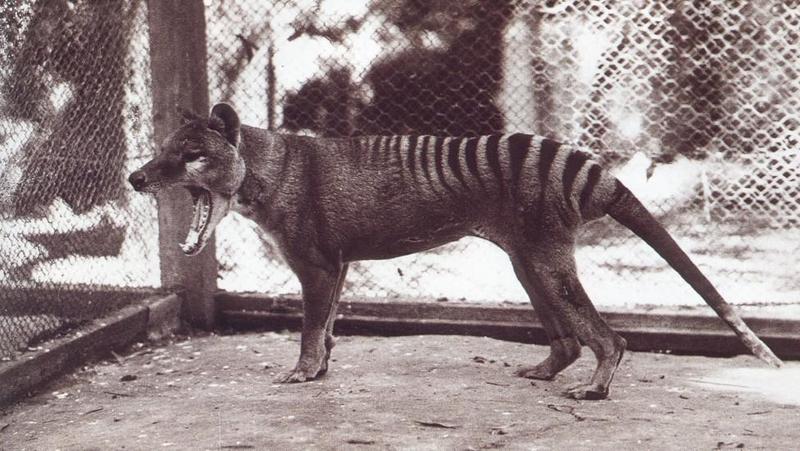
Posted on 12/15/2017 2:27:16 PM PST by Red Badger

The crest-tailed mulgara was once widely distributed across sandy deserts in inland Australia. Credit: Reece Pedler
=====================================================================================
A crest-tailed mulgara, a small carnivorous marsupial known only from fossilised bone fragments and presumed extinct in NSW for more than century, has been discovered in Sturt National Park north-west of Tibooburra.
A team from the UNSW Sydney's Wild Deserts project made the unexpected discovery during recent scientific monitoring.
UNSW scientist and wild deserts ecologist Dr Rebecca West says it is particularly exciting to find a crest-tailed mulgara alive for the first time in NSW.
"The crest-tailed mulgara was once widely distributed across sandy desert environments in inland Australia, but declined due to the effects of rabbits, cats and foxes," West says.
"The species weighs around 150 grams and has pale blonde fur and a thick tail with a distinctive black crest."
The discovery comes at a great time, according to UNSW scientist and Wild Deserts project coordinator Reece Pedler.
"Next year we are due to begin introduced predator and rabbit eradication from a large area, which will no doubt help the Mulgara," Pedler says.
National Parks and Wildlife Service area manager Jaymie Norris says the Wild Deserts project is contributing to the NSW Government's Saving our Species conservation program (SOS).
"The aim of this project is to return mammal species not seen in their natural habitat for over 90 years in Sturt National Park," he says.

Reduced rabbit populations over the past 20 years are thought to have benefited the species. Credit: Katherine Moseby
======================================================================================
"Rabbits, cats and foxes will be eradicated from two 20-square-kilometre fenced exclosures in Sturt National Park, before locally extinct mammals are reintroduced.
"Reintroduced native mammal species will include greater bilby, burrowing bettong, western quoll and western barred bandicoot."
The Wild Deserts project is a partnership between UNSW and Ecological Horizons, in collaboration with Taronga Conservation Society Australia.
Wild Deserts has been contracted by the NSW Office of Environment and Heritage to restore and promote desert ecosystems in Sturt National Park.
Previous work in South Australia by Wild Deserts team members suggests that the crest-tailed mulgara has been recovering in numbers and expanding its range.
Reduced rabbit populations during the past 20 years due to release of rabbit calicivirus is thought to have benefited the species by leading to increases in ground cover.
Reductions in populations of introduced predators such as cats and foxes has also increased the numbers of small rodents for mulgara to prey on.
In recent years, crest-tailed mulgara have expanded their distribution in the Strzelecki Desert over the border in South Australia.
I hope it goes well for the little rascal. I’m still a bit bumped from finding out that Marsupials are also Mammals — first found that out years ago, but when I was a kid they were considered separate. Same went for the change in status of Protista, that bugs me a little. :^)
https://en.wikipedia.org/wiki/Marsupial
https://en.wikipedia.org/wiki/Protist
I saw the whole thing, the sabertooth was definitely at fault, plus Dick was hung over. Nothing worse for a ***** than a hungover ****.
Where they will be hunted and eaten by foxes and cats.
Why are rabbits a problem? Are they predators down there? Given the kind of wildlife they have I guess it wouldn’t surprise me.
*SHUDDER* NO!
And I was glad to see that it’s just another rodent! ;)
(I always comment FIRST, THEN go back and read the article, LOL! It’s more fun that way...)
I think it said that Rabbits eat too much of the plant food and make more dry desert.
What, behind the rabbit?
Those aren’t ordinary rabbits – look at the fangs!!
Haha, you and me both, I thought they had finally found conclusive proof they were still around, after all the tantalizing ‘sightings’ over the years.
Sad to say, the moa is no moa.
Looks like the marsupial equivalent of a rat (rodent).

In Texas, 12 rabbits eat as much as a cow. In Oz, the rabbits over populated and eat up most of the native grass.
I vote for the Wolf too :)
Worst part of going back to school later in life isn't learning new information; it's having to learn the new classifications and renamings of old, information, already learned. Had some problems with some adult classes years ago, until I realized they were using revised terminology to "teach" me what I already knew.
Over 25+ years of hospital work, I had to keep relearning new terms for old things, e.g. bed sores uh pressure sores uh decubitus ulcers uh ...; oh, you get the idea.
None of it did anything to change prevention, diagnosis, or treatment; but lord help the hapless care giver who used other than the current terminology. Now, 20 more years later, I have no idea what they call them.
"Cups?!? We don't have cups! All we have are these Liquid Substance Surrounders." -- Firesign Theater
“locally extinct “ Locally is the key word. It’s a good way for tree huggers to pretend something is near actual extinction. There are no cattle around my house and haven’t been for years so they are locally extinct.
Disclaimer: Opinions posted on Free Republic are those of the individual posters and do not necessarily represent the opinion of Free Republic or its management. All materials posted herein are protected by copyright law and the exemption for fair use of copyrighted works.